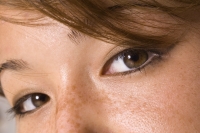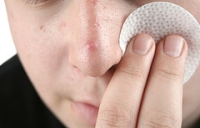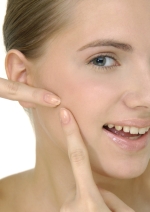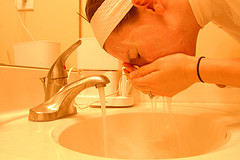Different Skin Problems

Some Skin Diseases or Skin Problems are curable while some are hereditary and some can be prevented with proper care.
1.Dry Skin Problems:
What Causes Dry Skin? Normal healthy skin looks pink, feels smooth and soft and is well preserved. If the superficial skin cells are deprived of water, the skin looks parched and cracked, and feels rough and hard. There are several reasons for developing dry skin. It can be a result of frequent washing (which removes natural oils) or a failure to protect the skin with regular applications of a moisturising cream. Certain environmental factors like wind, sun exposure, and overheated homes can also dehydrate the skin. Sometimes dryness is hereditary – then it is called ichthyosis. And as we age, our skin gradually becomes rough and parched.
Treatment To Follow: Here are some suggestions which you will find useful, if you have a dry skin:
– Use liberal amounts of oils and moisturisers;
– Avoid soaking in baths; showers are less drying;
– Use rubber gloves while doing household chores;
– Avoid getting your environment too dry, specially if you are used to air-conditioning;
– Use cosmetics formulated especially for dry skin, because many other cosmetics may have a drying effect.


2.Acne:
All You Have Ever Wanted To Know About Acne: Acne is one of the commonest skin problems. It produces unsightly spots on the face, neck, chest, back and upper arms. Although traditionally considered a teenage problem (8 out of 10 teenagers suffer from it), acne can affect people even in their forties. One out of every 20 persons have acne. The sebaceous glands is the site of the problem – these glands produce sebum which contains cholesterol, fatty acids and waxes. Several things can go wrong with this fairly simple process. For example, if the production of sebum increases or if the dead cells clog up the openings of the glands, the flow of sebum gets disturbed. The pores get blocked and blackheads and whiteheads form. Later, red, swollen, inflamed pimples develop as the sebum spills into the surrounding tissue. These pimples might even get infected. Male hormones, the androgens, are thought to be responsible, at least in part, for the overproduction of sebum and the consequent development of acne. In the past, diet had been held responsible for aggravating the problem. Hence for years, chocolates, spices and fatty foods were considered a taboo for acne patients. Recent studies, however have scientifically exploded this myth. So, dietary restrictions are no longer necessary to combat the onslaught of acne. Other factors that affect acne are menstruation, stressful conditions, hot humid climates and genetic factors. Cosmetic preparations containing lanolin and paraffin are known to exacerbate acne. Pimples may also occasionally occur as a side-effect of drugs taken of other illnesses.

A Doctor’s Approach To Acne: Treatment can either be limited to the exclusive use of local application or a combination of local treatment and oral medicines. Skin cleanliness and hygiene are of utmost importance. The simplest way is to wash the skin regularly and thoroughly with mild soap – this not only helps in improving the oily appearance but also helps in reducing the occurrence of pimples. You can sue a slightly abrasive; this does not have to be anything special, a rough washcloth is good enough. Non-woven polyester webs have been introduced and give excellent results. However, if you have infected acne which hurt avoid using abrasive cleansers. Greasy preparations for the scalp(oils) and face(Creams, vaseline) should not be used. Many patients complain of an increase in pimples following facial cream massages – so these are best avoided. Avoid squeezing your spots – this releases the gland contents into the tissues and so increases the inflammation. Some cosmetologists advise removal of blackheads – this is not only a time consuming procedure but is unlikely to reduce further appearance of acne.
Sulphur. the all important constituent of earlier acne treatments, is slowly giving way to newer drugs – retinoic acid and benzoyl peroxide. These cause scaling and redness of the skin but these side-effects are very necessary for the agents to be effective. Locally applied antibiotics have been used to

decrease the bacteria in the acne. Erythromycin lotion, an effective anti-acne agent, has recently been introduced. Preparations containing sodium lactate or azelaic acid are also very effective. Oral drugs are required when acne is severe and cannot be controlled by local measures. Oral antibiotics then form the pivot of therapy: the most frequently used antibiotic is tetracycline, though sulphas and erythromycin can also be used. Despite prolonged use, say for six months to a year, no serious side-effects are associated with the use of tetracyclines. Hormonal preparations have also been found useful in the treatment of acne. The contraceptive pill is used only if the patient has not improved with antibiotics treatment. Antiandrogens are also used sometimes. A note of caution is that these drugs should be used by women only, as they have unpleasant side-effects in men. A drug, isotretinoin, has revolutionised the treatment of acne, especially the severe variety. It is a derivative of vitamin A.